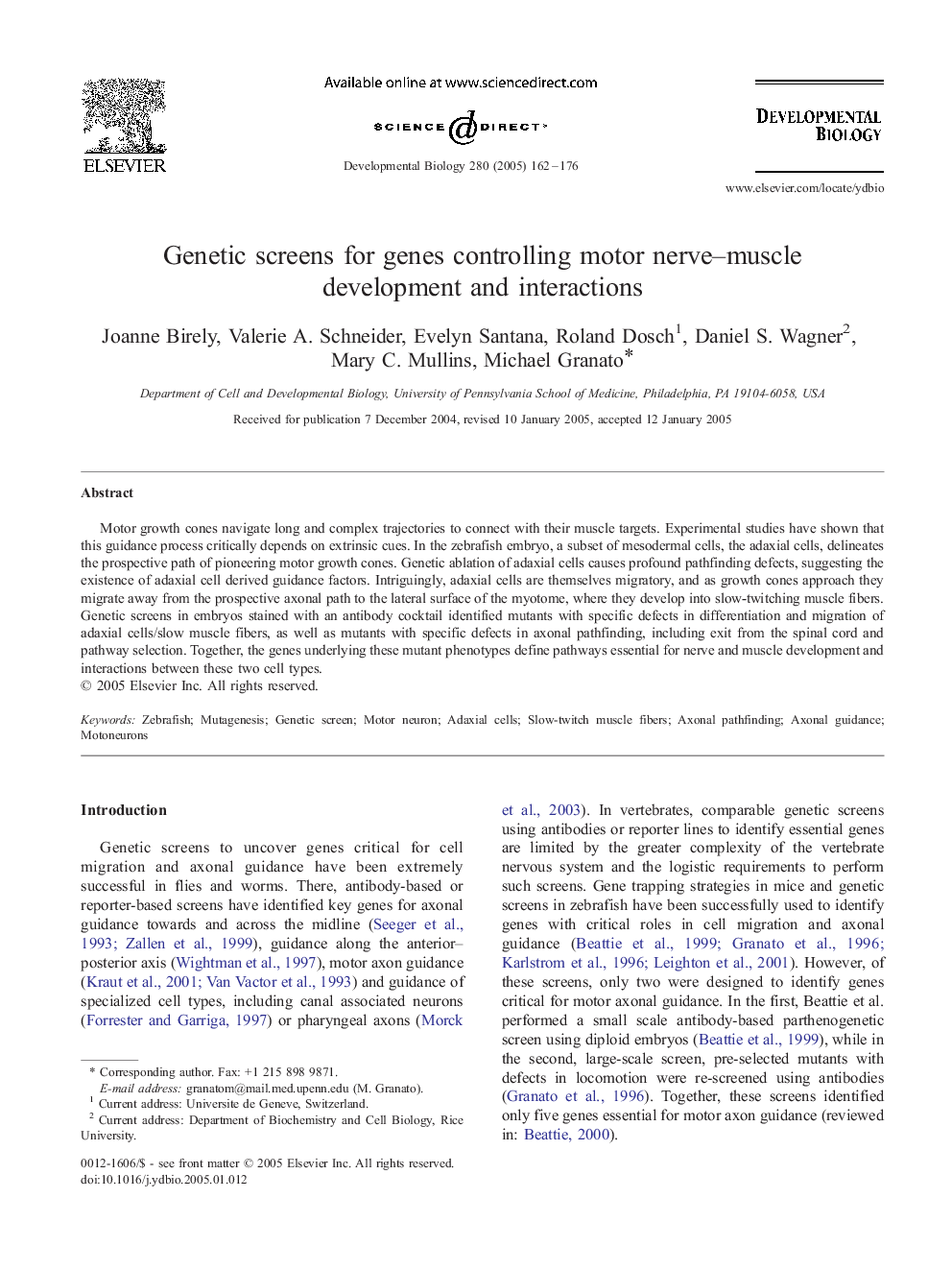| Article ID | Journal | Published Year | Pages | File Type |
|---|---|---|---|---|
| 10934283 | Developmental Biology | 2005 | 15 Pages |
Abstract
Motor growth cones navigate long and complex trajectories to connect with their muscle targets. Experimental studies have shown that this guidance process critically depends on extrinsic cues. In the zebrafish embryo, a subset of mesodermal cells, the adaxial cells, delineates the prospective path of pioneering motor growth cones. Genetic ablation of adaxial cells causes profound pathfinding defects, suggesting the existence of adaxial cell derived guidance factors. Intriguingly, adaxial cells are themselves migratory, and as growth cones approach they migrate away from the prospective axonal path to the lateral surface of the myotome, where they develop into slow-twitching muscle fibers. Genetic screens in embryos stained with an antibody cocktail identified mutants with specific defects in differentiation and migration of adaxial cells/slow muscle fibers, as well as mutants with specific defects in axonal pathfinding, including exit from the spinal cord and pathway selection. Together, the genes underlying these mutant phenotypes define pathways essential for nerve and muscle development and interactions between these two cell types.
Keywords
Related Topics
Life Sciences
Biochemistry, Genetics and Molecular Biology
Cell Biology
Authors
Joanne Birely, Valerie A. Schneider, Evelyn Santana, Roland Dosch, Daniel S. Wagner, Mary C. Mullins, Michael Granato,
